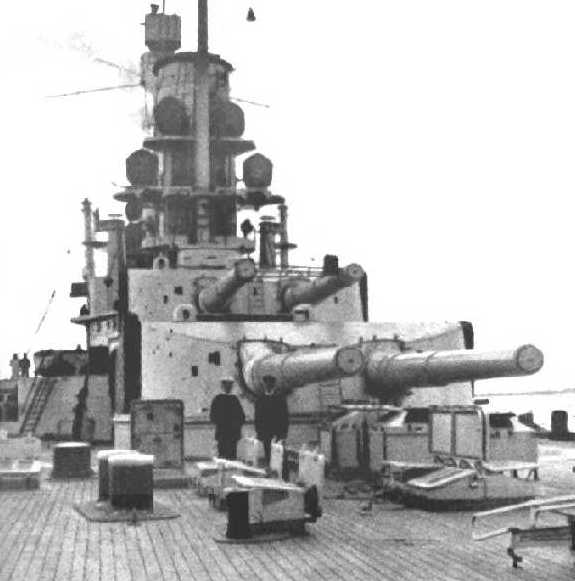These guns were fitted to many battleships and battlecruisers completed just before and after the start of World War I. When compared to contemporary British guns in terms of penetrating power, they were superior to the 12"/45 (30.5 cm) and 12"/50 (30.5 cm) guns, and only slightly less powerful than the 13.5" (34.3 cm) guns. They were, of course, completely outclassed by the 15"/42 (38.1 cm) guns used on the Queen Elizabeth class.
The battlecruisers Derfflinger and Lützow used these weapons at the Battle of Jutland (Skagerrak) to sink the British battlecruisers HMS Queen Mary and HMS Invincible.
The World War I Coastal Defense Battery Kaiser Wilhelm II located near Knocke in Belgium was equipped with four of these guns.
The mountings for these guns used electric pumps to drive hydraulic elevation gear while the training was all electric. These guns also had hydraulically worked rammers and breeches, the first fitted to German large-caliber guns. These changes increased the rate of fire, with most ships having a ROF of 20 seconds while the Kaiser class were reported to have had an overall ammunition supply speed of three rounds in 48 seconds, including all transfers.
In World War II these guns were used only as coastal artillery. They were then supplied with a more streamlined shell, giving them increased range. The best known battery was the six-gun Friedrich August at Wangerooge. Later, three of these guns on BSG mountings were moved to near Wimille on the Channel Coast.
Constructed from shrunk on tubes and hoops and used the Krupp horizontal sliding wedge breech block.
Actual bore diameter was 30.50 cm (12.008").
| Designation | 30.5 cm/50 (12") SK L/50 |
|---|---|
| Ship Class Used On | Helgoland, Kaiser, König and Derfflinger Classes |
| Date Of Design | 1908 |
| Date In Service | 1911 |
| Gun Weight | 114,309 lbs. (51,850 kg) 1 |
| Gun Length oa | 600.4 in (15.250 m) |
| Bore Length | 569.3 in (14.461 m) |
| Rifling Length | 465.0 in (11.805 m) |
| Grooves | (88) 0.262 in D x 0.118 in W (6.68 mm D x 3.0 mm W) |
| Lands | 0.165 in (4.20 mm) |
| Twist | Increasing RH 1 in 45 to 1 in 30 at the muzzle |
| Chamber Volume | For 551 lbs. (250 kg) shells: 12,052 in3 (197.5 dm3)
For 892.9 lbs. (405 kg) shells: 12,205 in3 (200.0 dm3) |
| Rate Of Fire | 2 - 3 rounds per minute |
- ^The often-seen figure of 171,079 lbs. (77,600 kg) for this weapon actually includes the weight of the Weige (gun cradle).
| Type | Cartridge - Bag |
|---|---|
| Projectile Types and Weights 1a | World War I - Ship and Coastal Artillery Projectiles
APC L/3,4: 892.9 lbs. (405.0 kg) 2a 3a 4a HE L/3,8 base fuze: 892.9 lbs. (405.0 kg) 5a World War I - Coastal Artillery Projectiles
World War II - Coastal Artillery Projectiles 7a |
| Bursting Charge | World War I 9a APC L/3,4: about 23.78 lbs. (10.785 kg) TNT 10a 11a HE L/3,8 base fuze: 54.69 lbs. (24.805 kg) TNT 12a HE L/5,3 base fuze: 54.69 lbs. (24.805 kg) TNT 12a World War II 13a |
| Projectile Length | World War I
APC L/3,4: 40.8 in (103.7 cm) HE L/3,8 base fuze: 45.2 in (114.8 cm) HE L/5,3 base fuze: 63.3 in (160.8 cm) World War II
|
| Propellant Charge 17a 18a | World War I
Fore Charge: 76.1 lbs. (34.5 kg) RPC/12 (1230 x 18/8) Rear Charge: 200.6 lbs. (91 kg) RPC/12 (1230 x 18/8) Reduced Rear Charge for Coastal Artillery: 188.5 lbs. (85.5 kg) RP C/06 (1230 x 28/18) 19a World War II (as of 1940)
For HE L/3,6 base and nose fuze
After 1942
For HE L/3,6 base and nose fuze
|
| Muzzle Velocity 21a | World War I
APC L/3,4 and HE L/3,8 base fuze: 2,805 fps (855 mps) HE L/5,3 base fuze: N/A World War II
|
| Cartridge Case Type, Size and Weight | Brass, 305 x 1,271 mm, 154 lbs. (70 kg) 22a |
| Working Pressure | 20.9 tons/in2 (3,300 kg/cm2) |
| Approximate Barrel Life | 200 rounds |
| Ammunition stowage per gun 23a | Helgoland: 85 rounds
Kaiser: 86 rounds 24a König 25a and Derfflinger 26a: 90 rounds |
- ^
Actual designations for World War I Projectiles APC L/3,4 30,5 cm Psgr. L/3,4 HE L/3,8 base fuze 30,5 cm Spgr. L/3,8 Bdz HE L/5,3 base fuze 30,5 cm Spgr. L/5,3 Bdz Actual designations for World War II Projectiles APC L/3,4 30,5 cm Psgr. L/3,4 HE L/3,8 base fuze 30,5 cm Spgr. L/3,8 Bdz HE L/3,6 base and nose fuze 30,5 cm Spgr. L/3,6 Bdz u. Kz (m.Hb) - ^A Note on Sources: Weights for both the APC L/3,4 and for the HE L/3,8 vary in many references. I have chosen to use the weight given in both M.Dv. Nr. 170,54 and in M.Dv. Nr. 234,6 and as stenciled on the projectiles shown in these documents which are all given as 405.0 kg (892.9 lbs.).
- ^A Note on Sources: Many English language references show the designation for the Psgr. (APC) projectile with a "(m.Hb)" suffix (projectile with ballistic cap). However, this suffix is not used in any German documentation for this projectile that I have found.
- ^A Note on Sources: In "Jutland: An Analysis of the Fighting" by John Campbell the length of the World War I 30,5 cm Psgr. (APC) is given as 97.4 cm (38.3 inches) or about L/3,1. However, the sketch used to illustrate this projectile is identical to the one in the World War II German document M.Dv. Nr. 170,54 where it is identified as the 30,5 cm Psgr. L/3,4. While no overall projectile length is given in the German documents, scaling it using a dimension that is on the sketch shown below has found that this projectile was about 3.4 calibers in overall length. More recent publications such as "German Battlecruisers of World War One" by Staff only note the Psgr. L/3,4 and not a L/3,1. From this analysis, I believe that the World War I and the World War II Psgr. projectiles were most likely the same shell and that Campbell is likely incorrect.
- ^A Note on Sources: In "German Battlecruisers of World War One" the weight of the Spgr. L/3,8 Bdz (HE L/3,8 base fuze) is stated as being 415 kg (915 lbs.) which is incorrect. See "A Note on Sources" below regarding 405.0 kg and 415 kg projectiles.
- ^The HE L/5,3 projectile was the HE L/3,8 base fuze projectile modified to add a ballistic cap.
- ^A Note on Sources: The Kriegsmarine Ammunition document, M.Dv. Nr. 198, which was first issued in 1940 and updated a few times until 1944, lists that the 30,5 cm SK L/50 gun had two 405 kg (892.8 lbs.) projectiles - 30,5 Psgr. L/3,4 and 30,5 cm Spgr. L/3,8 Bdz, both introduced before World War I - and three 415 kg (915 lbs.) projectiles - 30,5 cm Psgr. L/4,9 (m.Hb), 30,5 cm Spgr. L/5 Bdz. (m.Hb) and 30,5 cm Spgr. L/4,8 Kz. (m.Hb), developed during the late 1930s and early 1940s. This document may be the source used by the post-war "Service Major Caliber Projectiles of the German Navy: Technical Report No. 393-45" which lists all five of these projectiles as being for the 30,5 cm SK L/50 gun. Neither of these works mentions the prototype 30,5 cm SK C/39 gun found in "Naval Weapons of World War Two" and as noted in Bundesarchiv files RH 8/3089K and RH 8/3851K. As its designation implies, this prototype gun was designed in 1939 and completed shortly afterwards. "Naval Weapons of World War Two" does not mention the 405 kg projectiles at all, but instead states that 415 kg projectiles were used for both the 30,5 cm SK L/50 guns and also for the prototype 30,5 cm SK C/39 gun. In reviewing German primary source documents, it is found that these 415 kg projectiles are not listed at all in two Kriegsmarine documents for the 30,5 cm SK L/50 guns; M.Dv. Nr. 170,54, which was issued in 1940, and M.Dv. Nr. 234,6, which was issued in 1941. In addition, respected English language books for these guns such as "German Artillery of World War Two" by Ian Hogg, published in 1975, also do not list the 415 kg projectiles as being issued for this weapon, but instead list the 405 kg projectiles. Finally, in examining the 415 kg projectile types listed in M.Dv. Nr. 198, it seems obvious that they are "German ship type" projectiles and not "German coastal artillery type" designs. Coastal artillery projectiles developed during World War II were almost exclusively low weight types that were designed to obtain the maximum range possible. They were not the heavier projectiles types that were issued for naval warships. In trying to resolve these discrepancies and examining alternatives, what seems to be the most reasonable conclusion is that the heavier 415 kg projectiles were actually developed for the prototype 30,5 cm SK C/39 guns, as this weapon was intended to arm the new class of commerce-raiding heavy cruisers. They may have been test fired by the older 30,5 cm SK L/50 gun on the proving grounds, but probably were not actually introduced into service for that weapon. Based upon this conclusion, the 415 kg (915 lbs.) projectiles are listed only on the datapage for the 30,5 cm SK C/39 gun and not on this 30,5 cm SK L/50 datapage.
- ^German HE Base and Nose Fuzed projectiles with ballistic caps had a rod between the nose of the shell and the fuze to improve performance when striking obliquely. See details on 12.7 cm SK C/34 datapage.
- ^Burster weights (reiner Sprengstoff) for World War I projectiles mainly from "Diagrams of Great War."
- ^The APC burster had a wooden block in the nose of the burster cavity which acted as a shock absorber.
- ^A Note on Sources: In "Jutland: An Analysis of the Fighting" by John Campbell, the APC L/3,4 burster weight is given as 30 lbs. (13.61 kg). I believe that this weight is too heavy and that the actual weight was probably closer to the 23.78 lbs. (10.785 kg) of the World War II loading. "Naval Weapons of World War One" says the burster was 25.0 lbs. (11.34 kg), but apparently uses the explosive and non-explosive weight (Gesamtgewicht) which was 25.39 lbs. (11.518 kg) rather than the actual explosive weight (reiner Sprengstoff) of 23.78 lbs. (10.785 kg).
- ^Burster weights (reiner Sprengstoff) for World War II projectiles from M.Dv. Nr. 170,54.
- ^The burster for the APC L3,4 projectile of World War II was made from Fp 15 and Fp 1.
- ^The burster for the HE L/3,8 base fuze projectile of World War II was made from Fp 15, Fp 10, Fp 5 and Fp 1.
- ^The burster of the HE L/3,6 base and nose fuze projectile of World War II was made entirely with Fp 1.
- ^These guns, like most large caliber German guns of this era, used a "fore charge" which was propellant in a double bag silk case and a "rear charge" which was propellant in a brass case. The brass case helped to seal the breech of the gun.
- ^Propellant weights differ in many references and even in official documents such as the M.Dv. Nr. 170 and M.Dv. Nr. 190 series. This seems to be the result of most charges being listed as "zu etwa" which means "to about." This was probably because the different propellant formulations used - such as C/32 or C/38 - varied in weight. In addition, different loading weights were used depending upon the powder grain size utilized to make up the charge. The weights in the table above are for the powder grain specified.
- ^Firing with reduced charges usually did not use a forward charge. Reduced charges were made with RP C/06, apparently to use up existing stocks of the older propellant.
- ^The silk bag for the fore charge weighed 5.3 lbs. (2.4 kg).
- ^Using the "Small Battle Load" of just the rear charge gave the 892.9 lbs. (405.0 kg) projectiles a muzzle velocity of about 2,034 fps (620 mps).
- ^The cartridge rim diameter was 350.2 mm.
- ^Outfits were typically 70% APC and 30% HE.
- ^British post-war documents state that the Kaiser class carried 98 to 103 rounds per gun.
- ^British post-war documents state that the König class carried 96 to 100 rounds per gun.
- ^Outfit for Derfflinger class was 65 APC and 25 HE per gun.
- Diagrams of some of these projectiles and their fuzes and propellant charges may be found below.
| Elevation | Distance |
|---|---|
| 13.5 degrees | 17,717 yards (16,200 m) |
| 16.0 degrees | 22,310 yards (20,400 m) |
| Charge Type | Distance |
|---|---|
| Full Charge | N/A |
| Reduced Charge | 26,530 yards (24,260 m) |
| Charge Type | Distance |
|---|---|
| Full Charge | 41,010 yards (37,500 m) |
| Reduced Charge | 31,715 yards (29,000 m) |
| Elevation | Distance |
|---|---|
| 45.0 degrees | 35,000 yards (32,000 m) |
| Elevation | Distance |
|---|---|
| 49.1 degrees | 56,200 yards (51,400 m) |
- ^See elevation note in the "Mounting / Turret" section below.
| Range | Side Armor | Deck Armor |
|---|---|---|
| 14,000 yards (12,800 m) | 10.0" (254 mm) | --- |
| 16,000 yards (15,000 m) | 9.0" (229 mm) | --- |
Data from "Jutland: An Analysis of the Fighting."
| Range | Side Armor | Deck Armor |
|---|---|---|
| 10,940 yards (10,000 m) | 13.6" (345 mm) | --- |
| 13,120 yards (12,000 m) | 12.0" (305 mm) | --- |
Data from "German Battlecruisers of World War One."
The HE L/3,8 base fuze projectiles were stated to be capable of penetrating 2 to 6 meters (6 to 20 feet) through unarmored structures before detonating.
| Designation | Two-gun Turrets
Helgoland class (6): Drh LC/1908 Kaiser class (5) 1c: Drh LC/1909 König class (5) 2c: Drh LC/1911 Derfflinger class (4) 3c: Drh LC/1912 Hindenburg (4): Drh LC/1913 Single Coastal Artillery Turrets
|
|---|---|
| Weight | Ships: Between 534 to 549 tons (543 to 558 mt) 5c 6c Coastal Artillery: 271.9 tons (276.26 mt) |
| Elevation | All ships as built: -8 / +13.5 degrees
After 1915: -5.5 to +16.0 degrees 7c Coastal artillery: -5 / +50 degrees |
| Elevation Rate | Ships: 4 degrees per second
Coastal Artillery: 10 degrees per second with shell loaded |
| Train | End Turrets: About +150 / -150 degrees
Beam Turrets: About +80 / -80 degrees Coastal Artillery: -220 / +220 degrees |
| Train Rate | Ships: 3 degrees per second
Coastal Artillery: 4 degrees per second |
| Gun recoil | 36.0 in (91.5 cm) 8c |
| Loading Angle | Ships: about +5 degrees
Coastal Artillery: 0 degrees |
- ^The Kaiser class were the first German battleships to have superfiring turrets. This allowed them to have one less turret than previous classes (5 vs. 6) yet still be able to fire the same number of guns on the broadside.
- ^The König class had all main guns on the centerline, giving them a heavier broadside than earlier ships.
- ^Derfflinger had a crew of 70 men in C mounting and probably in A and B as well while D mounting had 80 crewmen.
- The LC/1913 turrets had 7.7 m (25.5 foot) rangefinders on each turret rather than the 3 m (10 foot) rangefinders on earlier designs.
- ^The mounting weight differences were mainly the result of thicker armor used on the battleships.
- ^
Armor thickness given in "Naval Weapons of World War One" by Norman Friedman Battleships Battlecruisers Face 11.8 in (30 cm) 10.6 in (27 cm) Sides 9.8 (25 cm) 8.7 in (22 cm) Rear 11.4 in (29 cm) except Kaiser class: 10.6 in (27 cm) 10.6 in (27 cm) Roof 3.1 to 4.3 in (8 to 11 cm) except Helgoland class: 2.8 3.9 in (7 to 10 cm) 3.1 to 4.3 in (8 to 11 cm) except Hindenburg: 3.1 to 5.9 in (8 to 15 cm) - ^Prinzregent Luitpold was modified just before and the other ships shortly after Jutland (Skagerrak) to increase the maximum elevation from +13.5 to +16.0 degrees. A few sources claim that the maximum elevation was increased on all ships to 16.5 degrees rather than to 16.0 degrees. Norman Friedman in "Naval Weapons of World War One" gives conflicting data for maximum elevations and ranges with no explanation. For that reason, I do not believe this source to be a reliable reference in this matter.
- ^The recoil distance given above is the nominal figure. The absolute, metal-to-metal recoil distance was 38.6 inches (98.0 cm).
- Run out was by compressed air. Magazines were above shell rooms on the battleships. The Helgoland, Kaiser and König classes had a machinery level directly below the gunhouse with a handling room below it. Lower shell and propellant hoists came up to the handling room and the ammunition was then transferred over to the upper hoists which ran up to the gunhouse. Each gun had its own projectile and propellant hoist for both the lower and upper hoists. Guns were separated by a 25 mm (1") splinter bulkhead. Expended casings were probably ejected via a flap door, similar to the earlier 28 cm (11") mountings.
- The ammunition supply arrangements on Derfflinger and Lützow was generally similar to those on the battleships. A, B and C turrets had the magazines below the shell rooms, but D turret had the magazine above the shell room for reasons of space. D turret also did not have the shell hoists broken at the working chamber as did all earlier 30.5 cm (12") mountings. Instead, the projectile hoists ran directly from the shell room up to the gunhouse. Shell hoists could service either gun. Hindenburg had all shell rooms below the magazines as in the battleships. She also differed from her half-sisters in having all projectile hoists run directly up to the gunhouse, although her propellant hoists were still two stage. Hindenburg had half the number of lower propellant hoists as on the earlier mountings, but these hoists ran faster and were still capable of supplying the equivalent of three complete rounds per gun per minute.
- Training of the gun turrets was electric and gun elevation was hydraulic. Hydraulic power was provided by two electrically-driven triple pumps. Rammers were hydraulically powered with fluid being supplied directly from the elevation pump. Wedge breech mechanisms were hydraulically powered but could be manually operated.
- Propellant smoke was removed with two independent suction systems, each with its own motor. Should one motor fail, the other motor could be coupled to run both systems at a reduced rate.
- For at least the Drh LC/1912 turrets, the guns were separated by a 25 mm (1.0") splinter bulkhead. Following the Dogger Bank action, German mountings were modified to improve flash precautions. Double flap doors were installed at the beginning and end of the cartridge hoist and ready ammunition was removed from the gun houses.
- The gun axes were 106.3 in (270 cm) apart.
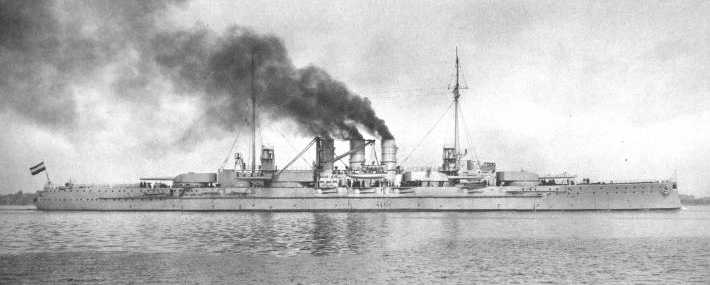
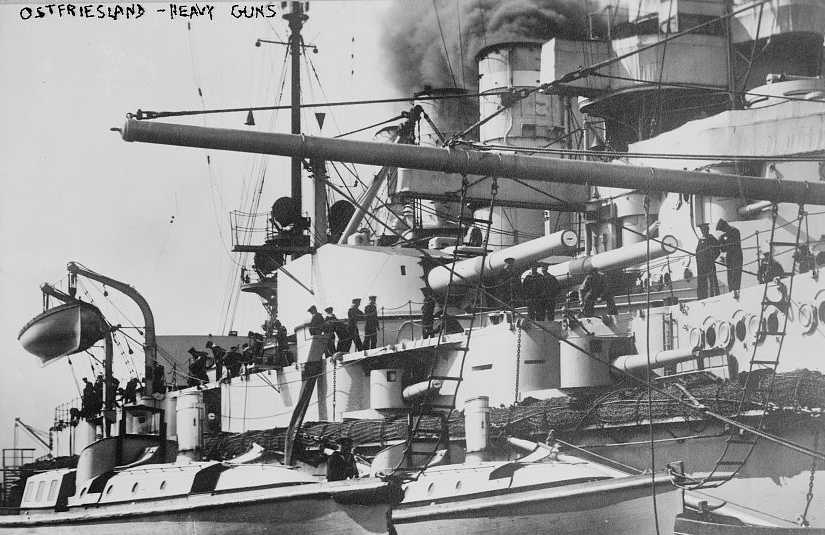
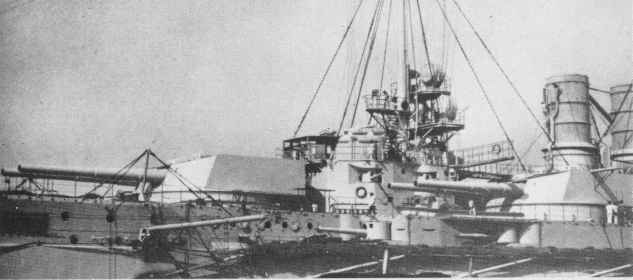
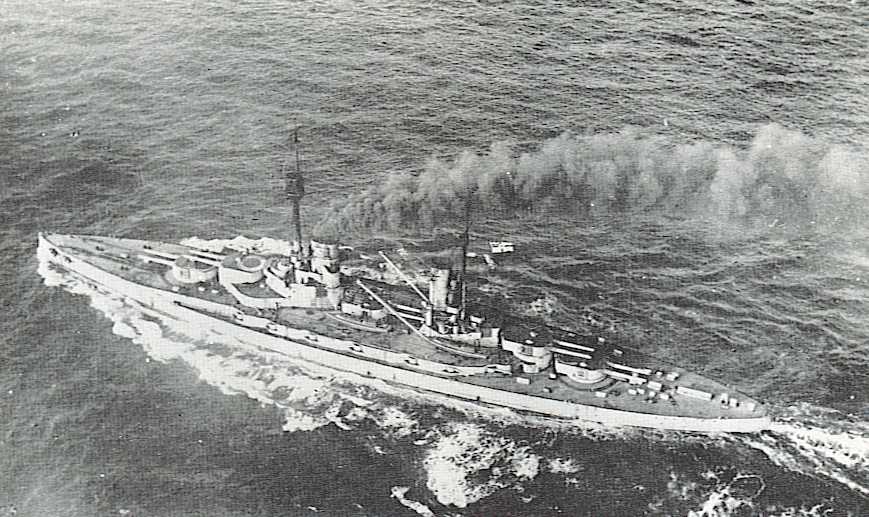

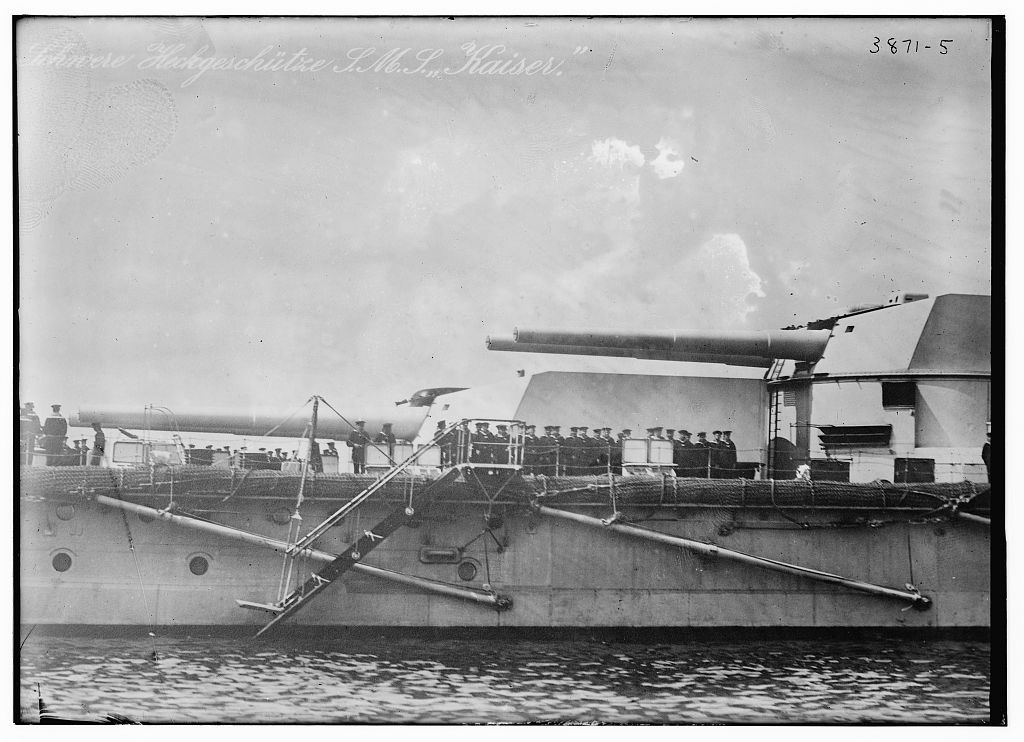
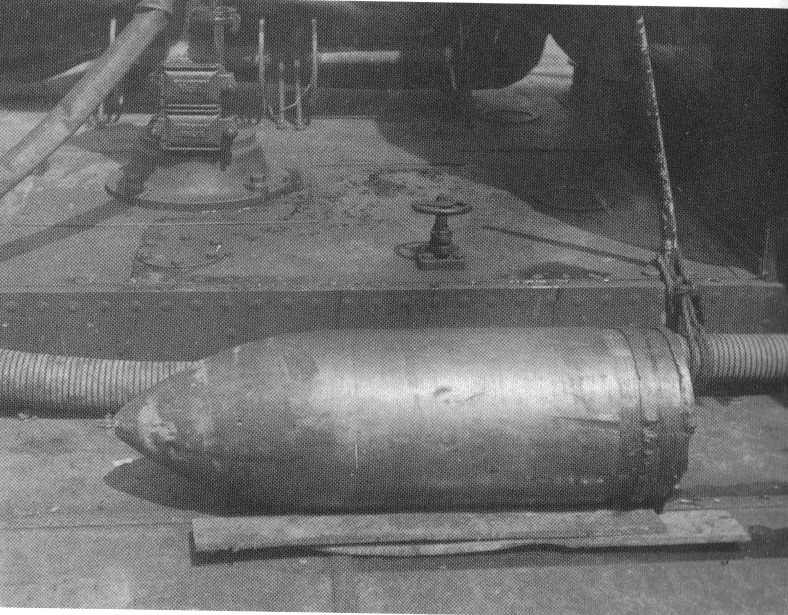
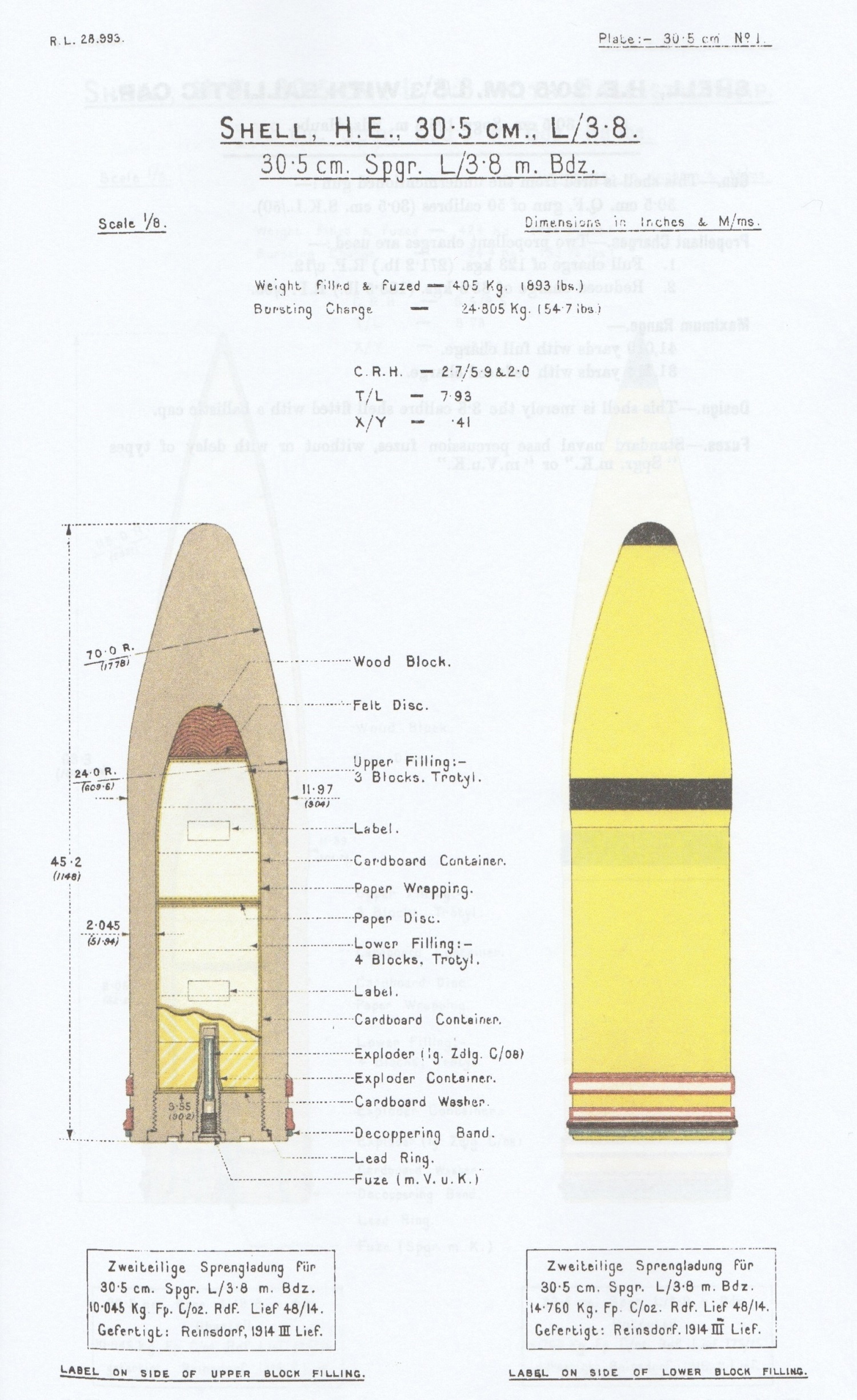
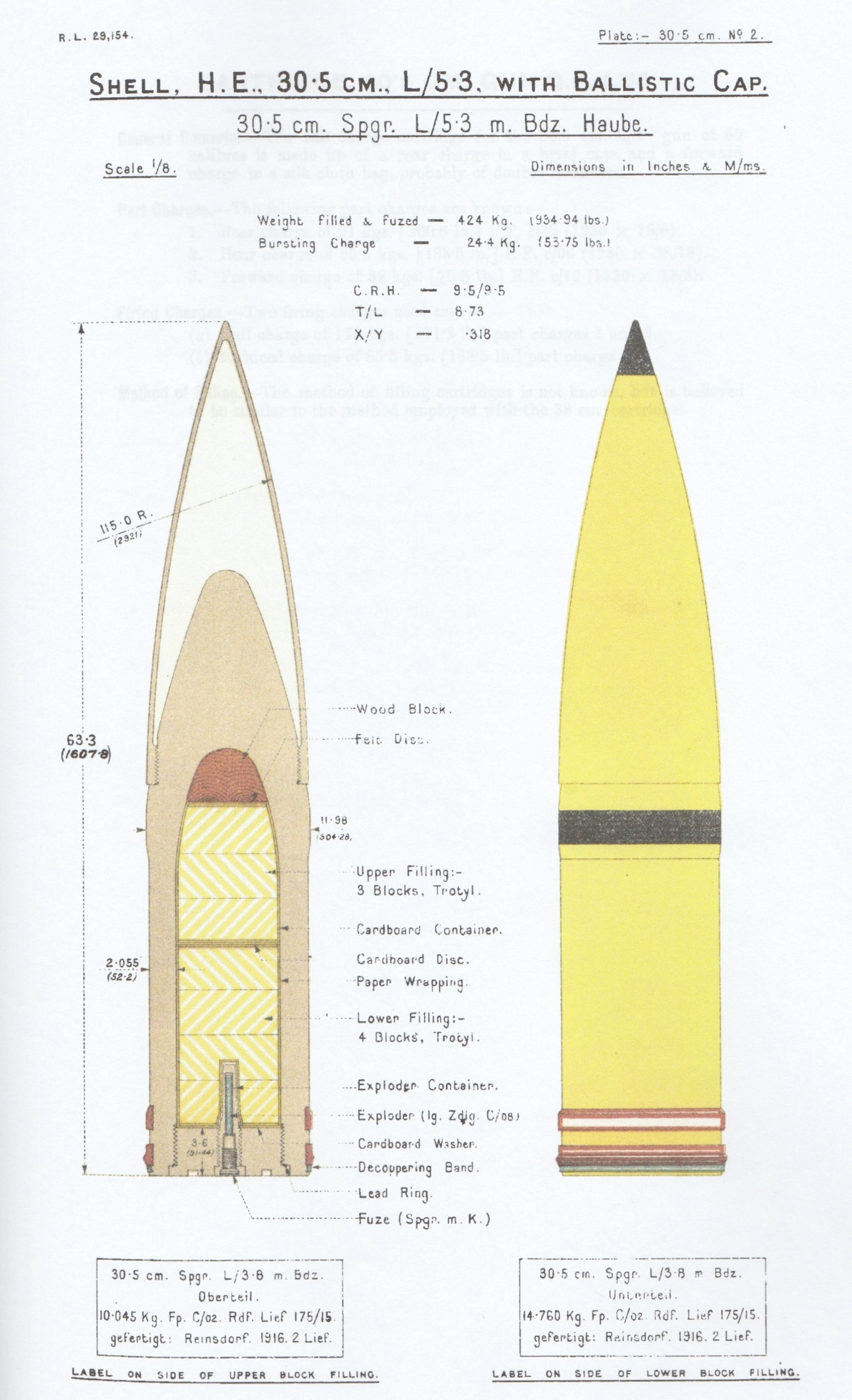
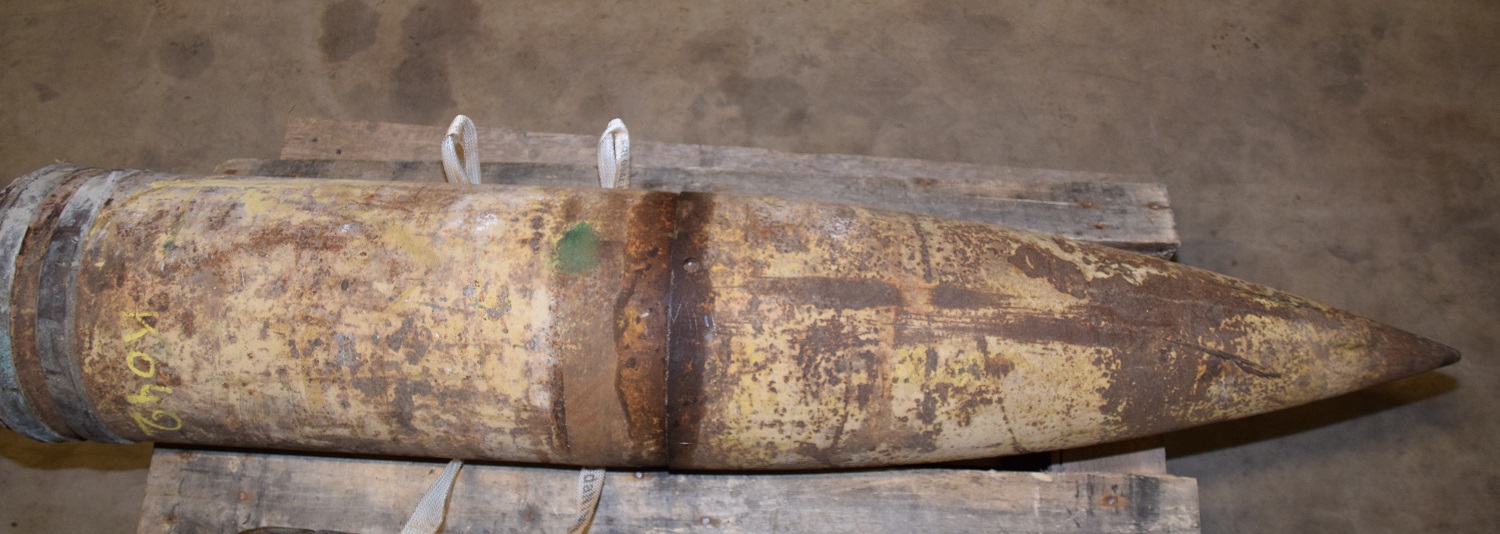
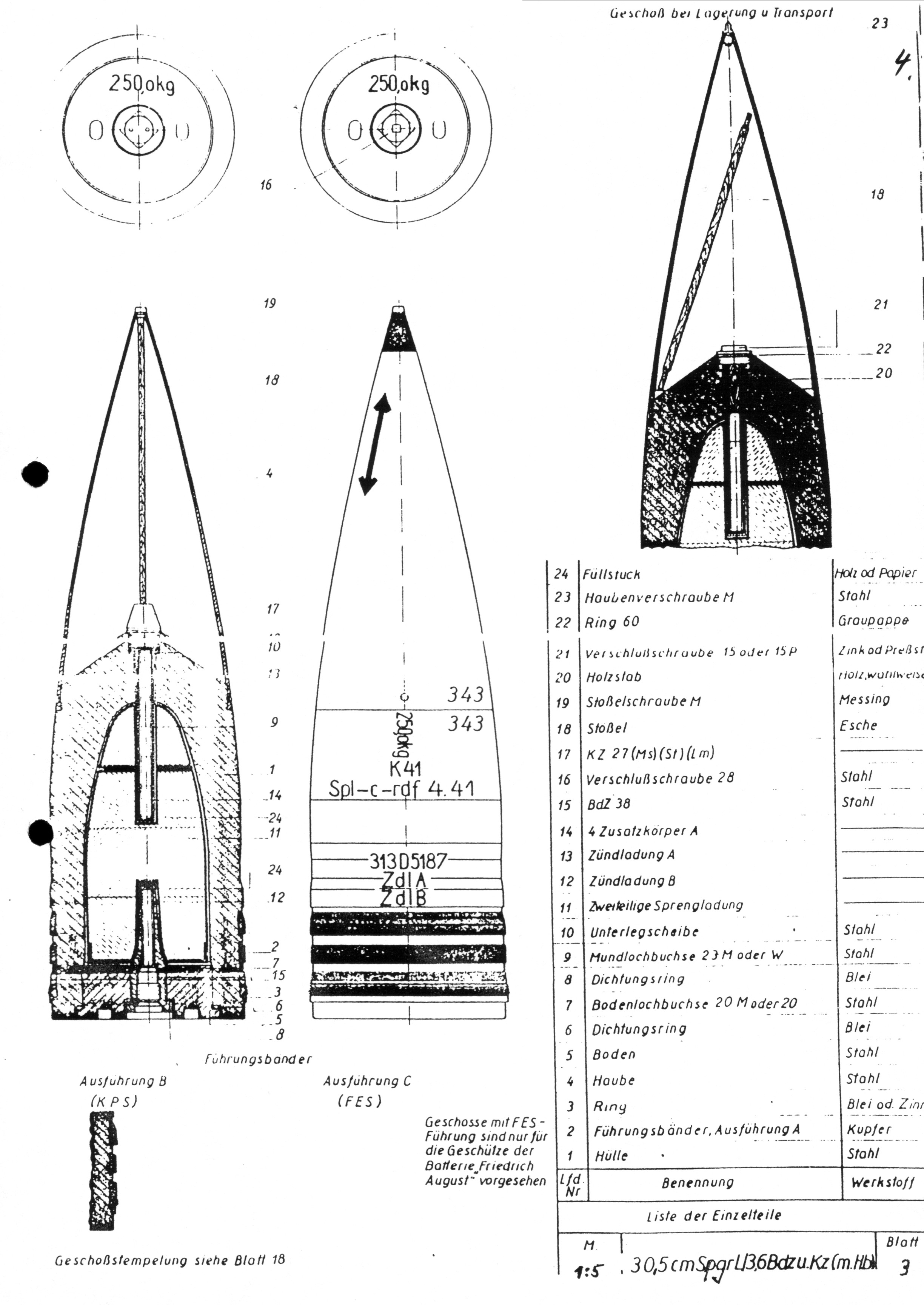

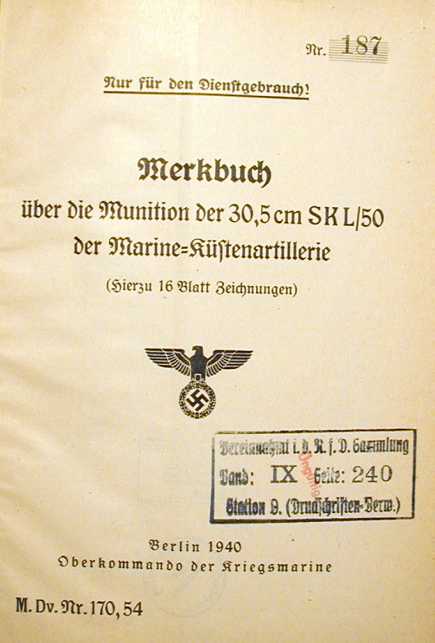
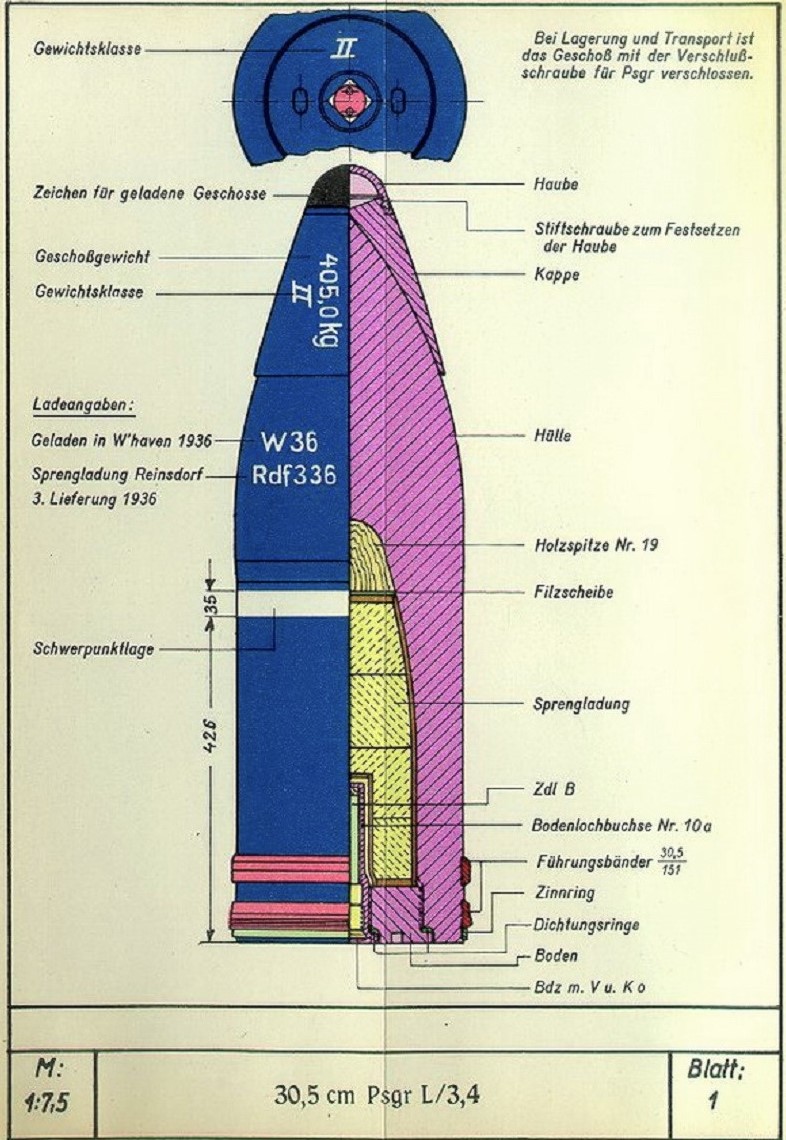
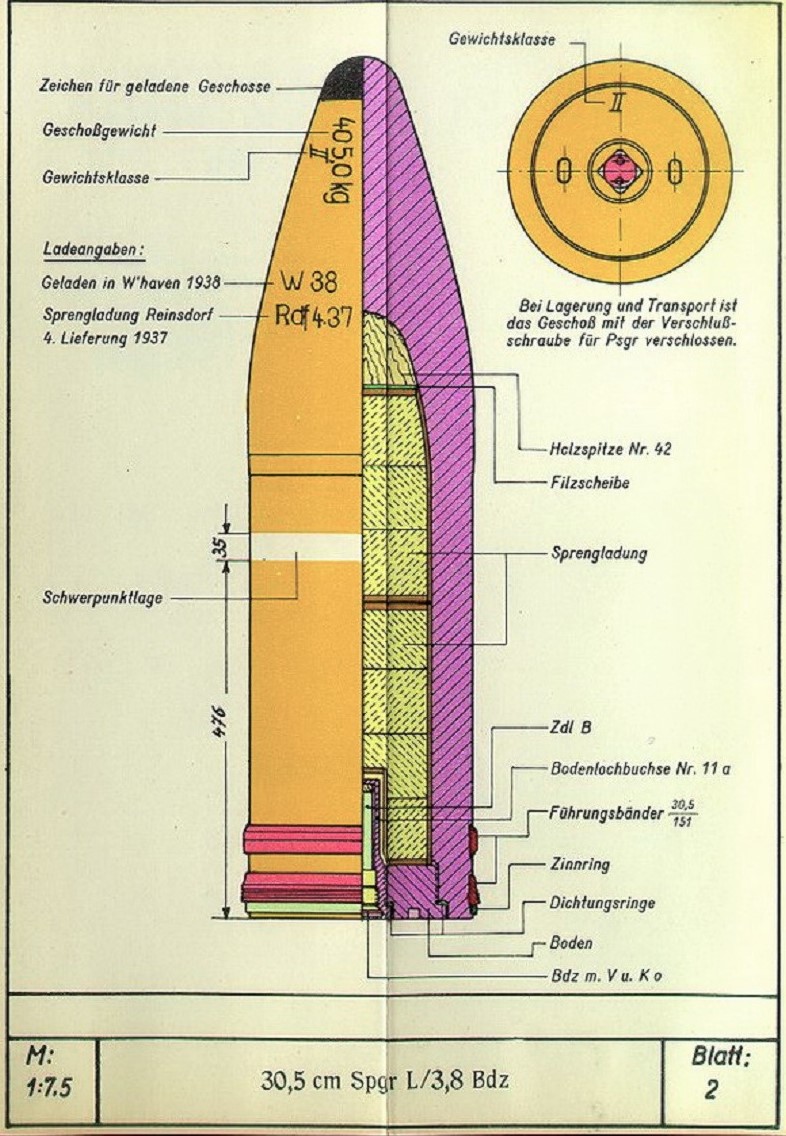
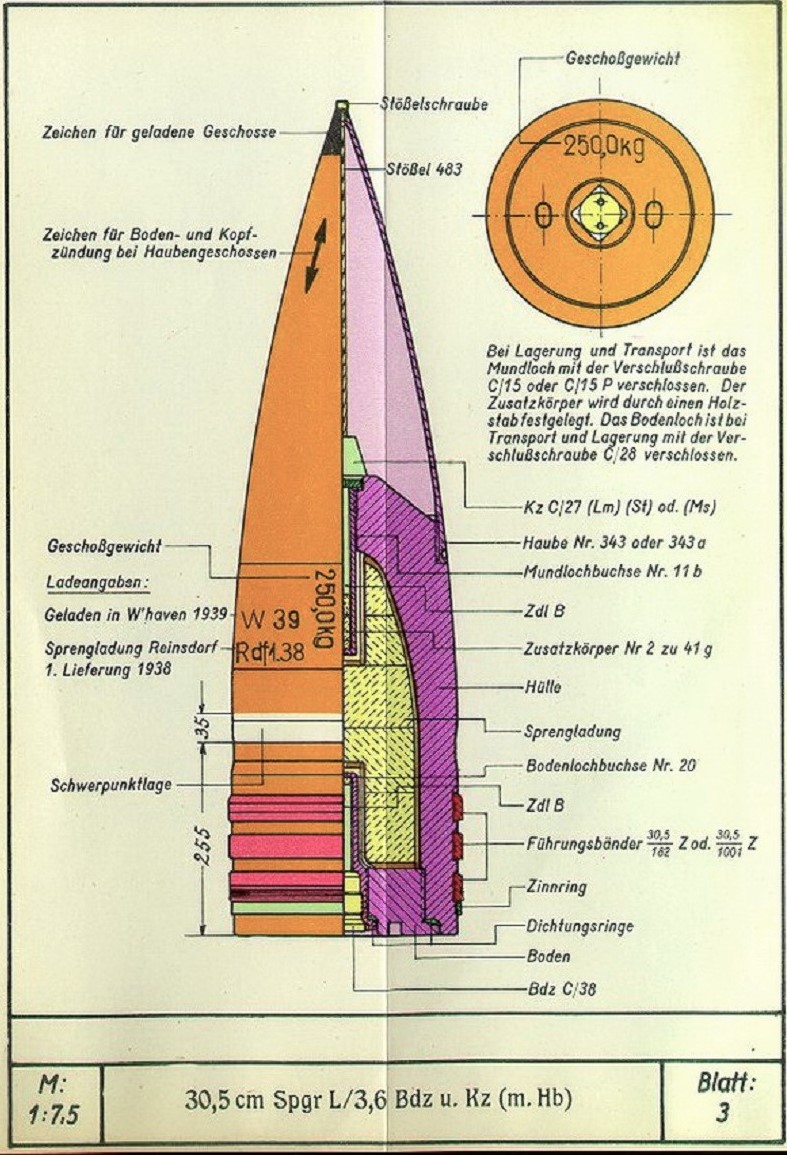

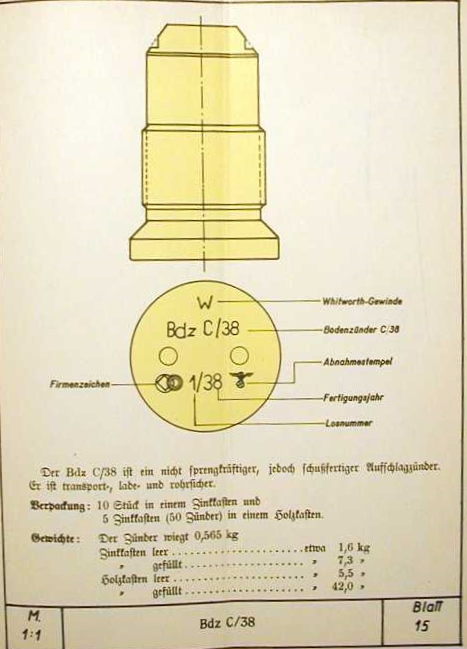
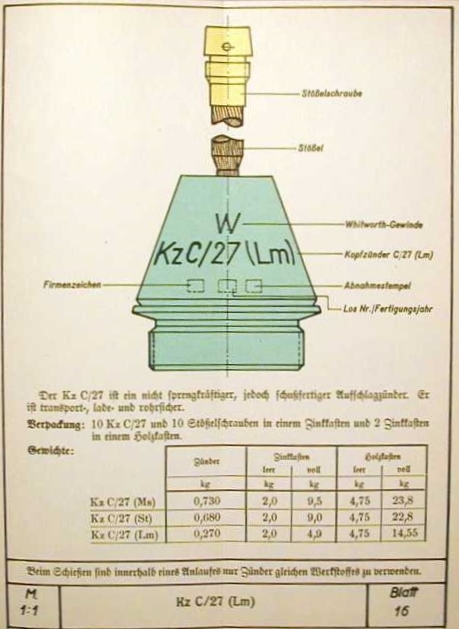
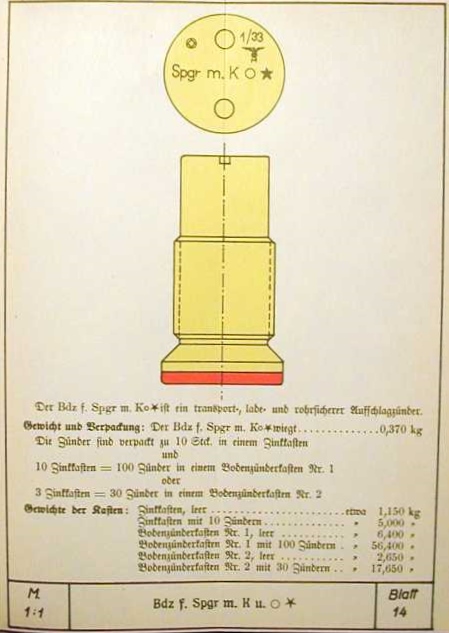
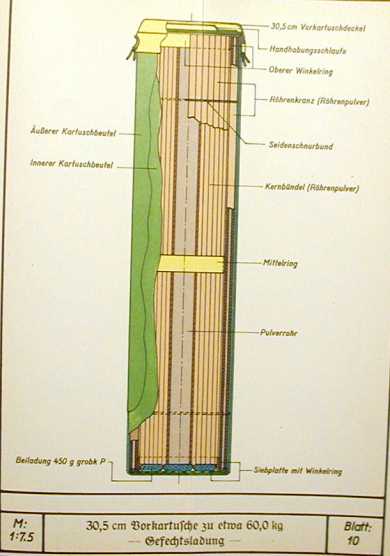
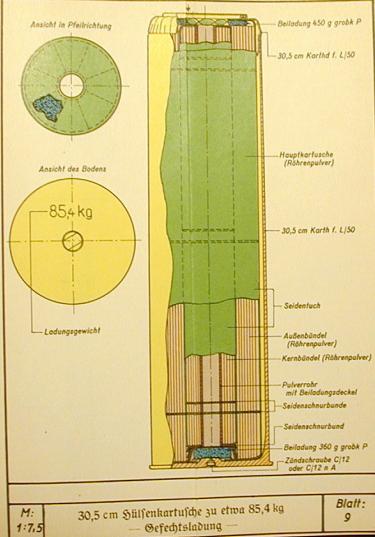
"The Battle of Jutland" by Geoffrey Bennett
"Warship Special 1: Battle Cruisers," "Jutland: An Analysis of the Fighting" and "Naval Weapons of World War Two"
all by John Campbell
"Battleship Design and Development 1905-1945" and "Naval Weapons of World War One" both by Norman Friedman
"Große Kreuzer der Kaiserlichen Marine 1906 - 1918" by Axel Grießmer
"German Warships 1815-1945" by Erich Gröner
"The Big Gun: Battleship Main Armament 1860-1945" by Peter Hodges
"German Artillery of World War Two" by Ian Hogg
"The German Defenses on the Coast of Belgium" by Lt. Col. H.W. Miller USA in "The Journal of the American Society
of Mechanical Engineers" Vol. 42, No. 6, June 1920
"North Sea Battleground: The War at Sea 1914-18" by Bryan Perrett
"Die Geschichte der deutschen Schiffsartillerie" by Paul Schmalenbach
"German Battlecruisers 1914-18" and "German Battlecruisers of World War One" both by Gary Staff
"German Warships of World War I" by John C. Taylor
"German Capital Ships of World War Two" by M.J. Whitley
---
"Service Major Caliber Projectiles of the German Navy: Technical Report No. 393-45" by U.S. Naval Technical Mission to Europe
"Diagrams of Great War - German Naval Guns; Shells & Explosives; Fuses & Exploders" by The Royal Laboratory Woolwich 1921-22
"Merkbuch über die Munition der 30,5 cm SK L/50 der Marine-Küstenartillerie" M.Dv. Nr. 170,54 Berlin 1940, Oberkommando der Kriegsmarine
"Vorläufige Beschreibung der 28 cm S.K.L/45, 28 cm S.K.L/50 und 30,5 cm S.K.L/50 in Kst.Drh.L.C.37" M.Dv. Nr. 234,6 Berlin 1941, Oberkommando der Kriegsmarine
"Munitionsvorschriften für die Kriegsmarine - Panzersprenggranaten (Psgr)" M.Dv. Nr. 190,1A2 by Oberkommando der Kriegsmarine
"Munitionsvorschriften für die Kriegsmarine - Sprenggranaten (Spgr)" M.Dv. Nr. 190,1A3 by Oberkommando der Kriegsmarine
"Munitionsvorschriften für die Kriegsmarine - Hülsenkartusche" M.Dv. Nr. 190,4A1 by Oberkommando der Kriegsmarine
"Munitionsvorschriften für die Kriegsmarine - Vorkartusche" M.Dv. Nr. 190,4A6 by Oberkommando der Kriegsmarine
"Übersicht über die für die Marinegeschütze und deren Abk K zu verwendende Munition und ihre Einzelteile einschließlich Salut-
und Manöverladungen" [Overview of the ammunition to be used for the naval guns and their abbreviations and their individual parts,
including salute and maneuver loads] M.Dv. Nr. 198 by Oberkommando der Kriegsmarine
---
Special help from Peter Lienau and Thorsten Wahl
28 December 2008 - Benchmark
18 November 2010 - Corrected typographical error, modified some picture captions for clarity
26 August 2011 - Added twist and projectile information
21 December 2011 - Added picture of shell that hit HMS Defender
31 December 2011 - Added mounting notes and source for picture on Additional Pictures page
24 November 2012 - Added details on mountings
08 December 2014 - Added comment on HE shell weight, additional armor penetration data, additional information on mountings
29 August 2015 - Additional ammunition and mounting information
17 April 2016 - Corrected typographical error
02 March 2019 - Converted to HTML 5 format, reorganized notes and added sketch from M.Dv. Nr. 190,1A1
15 January 2022 - Added details for "zu etwa" note and added reference
11 September 2022 - Added photograph of guns on Battleship Kaiser
17 November 2022 - Added reduced charge description, added World War I ammunition information and cutaway sketches of projectiles, redid projectile sketches from M.Dv. Nr. 170,54
01 January 2023 - Added Note on Sources regarding length of APC L/3,4 and added to the Note on Sources regarding the APC L/4,9
07 February 2024 - Minor changes to Source Note on projectiles, fixed typographical error on source document reference and added photograph of recovered Spgr. L/5,3 projectile
28 August 2024 - Added burster notes, propellant information and Source Note regarding the 30,5 cm SK C/39 gun and projectiles
23 December 2024 - Expanded Source Note regarding the 30,5 cm SK C/39 gun and projectiles
14 January 2025 - Reworked descriptions of shell and propellant hoists

